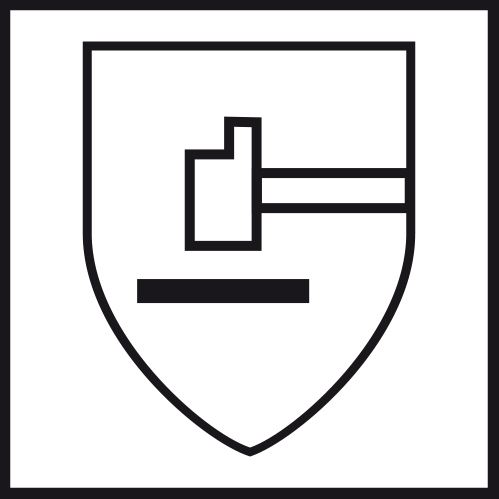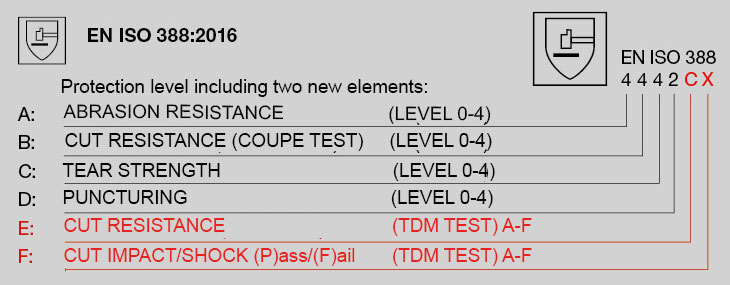EN ISO 388:2016 - Protective gloves against mechanical damage




X indicates not tested/could not be carried out/approved.
0 – 4, where 4 is the best score
A: Abrasion resistance
Materials are tested with sandpaper under specific pressure
to check how quickly they abrade. A number between 1 and 4 indicates the abrasion resistance, and higher numbers signify stronger material.
B: Cut resistance
A knife is dragged over the material until it cuts through. Cut resistance is ranked from 1 to 5, where 5 is the best. If the material
dulls the knife, another test is used - ISO 13997 (see point E).
C: Tear resistance
This examines how much force required to tear the material. Tear resistance is scored with numbers from 1 to 4, where 4 is the top score.
D: Puncture resistance
This examines how much force is required
to puncture the material with a pointed object.
This is also scored from 1 to 4, where 4 is the best.
E: Cut resistance (ISO 13997 TDM-Test)
If the usual cut resistance test cannot be carried out,
the TDM test in ISO 13997 is used. This gives a score from
A to F (where F is the best). If both parts are specified, it is
the letter you should look at.
F: Impact protection
If the gloves have impact protection, this is signified with
the letter 'P' at the end of the code.
This is only an excerpt from the standard, subject to errors. For the complete and latest version of the standard, visit standard.no
Last update: March 2024
